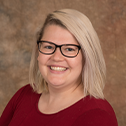Saved By The Bell was one of my all-time favorite television shows growing up. I’ll never forget sitting at the kitchen table with a bowl of cereal watching reruns before getting ready to hop on my own bus to school. The slapstick comedy, the relatable characters, and completely unrealistic scenarios never failed to incite giggles over my breakfast. But the silliness of the show wasn’t all it had to offer.
There were all sorts of life lessons that the audience learned through the antics of the troupe of characters. One in particular stands out: Zack Morris. “Preppy” and stubborn, Zack had an eye for mischief and schemes, creating chaos throughout the building for his friends, Principal Belding, and the other teachers at Bayside High. His high jinks were always the highlight of the show. The consequences of his shenanigans, though, aren’t the most important things to learn from Zack Morris. Rather, we need to learn a lesson from his selfishness.
No matter what schemes were being planned, Zack always had one question in his mind, especially when it came to helping his classmates: what’s in it for me?
It’s a question we often scorn. It’s true that there are many instances where this is, indeed, the wrong question. Afterall, Christ doesn’t call us to be selfish, but to serve our neighbor and care for creation. Selfishness is a trait that comes from our Adam-image, the multigenerational gift of the Fall. In our efforts to put on the new self, we set selfishness aside.
In education, we often feel this pressure to give without receipt. Lessons need planning, essays need graded, and newsletters need written. Apart from the daily grind, we’re planning kindergarten graduations, field trips and field days, and dealing with troublemakers. We’re lucky to get a bathroom break in the midst of it all. Even with all of the rewards that teaching brings, the burdens can weigh us down.
And as the pressure to go, go, go and do, do, do mounts through the school year, it’s not hard for curriculum mapping to feel like the proverbial straw.
Curriculum mapping has its benefits, but it often feels like they’re for everyone else. Let’s face it, creating a single map takes time. If you teach more than one grade level or subject area, that means you’re creating multiple maps, effectively doubling, tripling, or even quadrupling your work. And when the maps are complete, we’re ready for accreditation teams to come in and evaluate our curriculum, our administration can see what’s going on in our classrooms at the unit level, and we’ve got a good list to pass on to the teacher who replaces us if we ever leave our position. We’ve done all the work and our reward was …?
Now’s our chance to take a page from Zack Morris’s book and ask his forbidden question. What IS in it for me? How can this mapping endeavor be worthwhile at the lesson level?
The truth is, curriculum maps aren’t just for accreditation. They’re not just a tool used to “train the next guy.” They aren’t even just a log of the strategies and standards that you use in your classroom. Curriculum maps are a tool for our toolbelt.
If we look at our maps as a job that has to get done for others rather than a tool to use ourselves, we’re really not utilizing them to their fullest potential. Curriculum maps are a fluid guide for what you teach and when and how you teach it, and there are ways to use it well.
Here are some quick and dirty tips for better utilizing your curriculum maps.
1. Make sure your maps are detailed.
Having a detailed map doesn’t just mean including the essential questions and some strategies that you’ll use during the unit. Minimal information might be good enough for others, but one-word blurbs aren’t at all helpful to you. Instead, ramp up the clarity of your maps and write a description of the activities, strategies, and assessments you’ll be using.
What’s in it for you?
Knowing that you use a “journal” as an activity in your novel unit is valuable. Knowing that you “compare and contrast character motivations and perspectives between the protagonist, Esperanza, and various secondary characters using first person journal entries” tells us so much more. Now, not only can you see exactly what students will be expected to accomplish during that activity, you can also see the prior learning and skills students need to be able to reach those expectations. A “journal” could be anything. Being able to see at a glance the content of your activities can help you to better plan and prep lessons on the daily level.
The more detail we include, the more effectively we can use our maps.
2. Use the attachments feature in Curriculum Trak.
As teachers, we are curriculum curators. We pull things from our text-books, websites, Teachers Pay Teachers, and a plethora of other resources. Our documents folder is either jam-packed with assorted files or we’ve created a maze to navigate through for each of our units.
What’s in it for you?
Curriculum Trak’s attachments feature eliminates the folder maze. For every assignment you use in the unit, you can attach the documents that are necessary for the successful implementation of the unit. Then as you prepare for each unit, you can quickly access everything you need right there in one place. Gone are the days of rummaging through filing cabinets or digital documents and resources to find what you need the Friday before. Click and done.*
3. Look at your maps before starting each unit.
What’s in it for you?
Looking at our (hopefully detailed) maps before each unit can help us prep materials in advance. When we only look at our curriculum maps once each year, we often spend exorbitant amounts of time writing out our lesson plans, scavenging for resources, or running off copies just before the lesson begins. Sometimes, we even fly by the seat of our pants with a random extra day, finding ourselves one activity short.
By using our maps at the beginning of each unit, we can quickly slot our plans accurately into our weekly or daily planner. Then, we can make sure that the guaranteed minimums that we’ve included in our unit maps are actually being carried out in our lesson plans, and we can see where we might need some extra resources beforehand.
The additional bonus? A little extra work on the front side of the unit can cut back on the time we spend working overtime during the unit. Teachers are always putting in extra hours for their kids. Even I am guilty of this. But the more we prep and plan in advance, the less hours we have to spend outside of our contract time throwing resources together for our students. Use the tools you’ve already spent time on to your advantage.
4. Update your maps at the unit’s end.
Spend ten to fifteen minutes at the culmination of each of your units to make curriculum map modifications.
What’s in it for you?
The benefits to this are two-fold.
First, at the end of a unit, we know exactly what worked and what didn’t, so it’s easy to make quick adjustments. Things change and we adapt. We learn better differentiation strategies. We add to our arsenal as we go. Going back and making changes to weed through six months of memories creates foggy maps. Updating things right away makes our adjustments more accurate. These adjustments help us to use our curriculum more intuitively next year.
Second, updating maps in quick bursts throughout the year eliminates the need to do yearly or (gasp!) accreditation year curriculum overhauls. One of the biggest complaints about curriculum mapping is how much time and energy has to be dedicated to those maps. If we don’t wait, the time we need for keeping them up to date is dramatically lessened.
We don’t want to be like Zack Morris in every way; but when it comes to curriculum mapping, ask his favorite question: What’s in it for me?
*Questions are often raised about the attachments feature regarding proprietary information. Curriculum Trak disables the attachments feature when we view curriculum for maps outside of our district. Uploading documents from your curriculum resources will not share those documents outside of your organization.
Photo by Christin Hume on Unsplash




